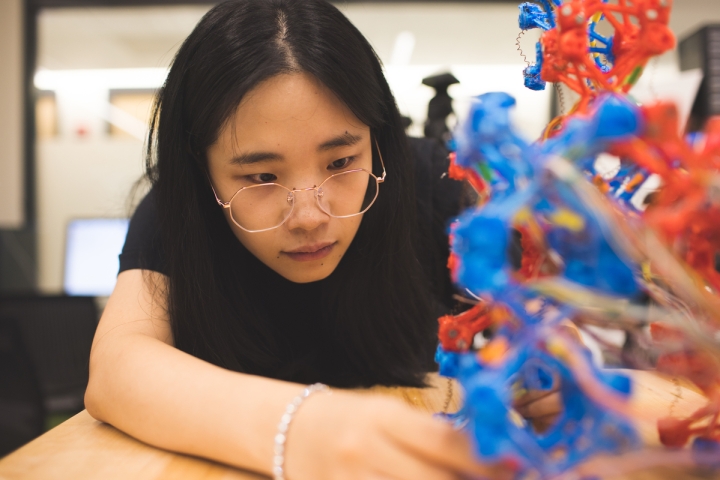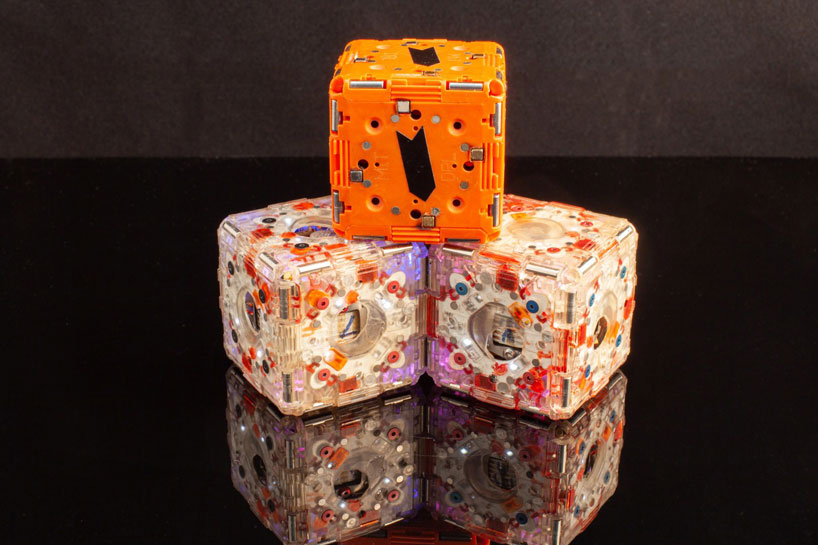
The Future is Reconfigurable: A Deep Dive into the Next Generation of Robot Building Blocks
The Dawn of a New Era: From Static Bricks to Dynamic, Self-Assembling Robots
For generations, building blocks have been a cornerstone of creativity and learning. From simple wooden cubes to intricate LEGO sets, they have taught us about structure, design, and spatial reasoning. But what if those blocks could do more? What if they could communicate, move, and assemble themselves into complex, functional structures on demand? This isn’t science fiction; it’s the cutting edge of robotics and a major headline in Robot Building Block News. Researchers and innovators are shattering the paradigm of static construction, creating modular robotic systems that can dynamically reconfigure themselves. The latest advancements, particularly those leveraging principles like tensegrity, are paving the way for robots that can transform from a pile of components into a load-bearing bridge, an emergency shelter, or a complex piece of machinery. This evolution marks a profound shift, moving beyond simple programmable toys into the realm of intelligent, adaptable, and autonomous physical systems. This article explores this revolutionary trend, diving deep into the technology, applications, and implications of the next generation of robot building blocks.
Section 1: Deconstructing the Revolution in Modular Robotics
The core concept of modular robotics is not entirely new. Hobbyists and educators are familiar with platforms like VEX Robotics and LEGO Mindstorms, which provide a fantastic introduction to engineering and programming. However, the latest wave of innovation represents a quantum leap forward. Instead of a human manually assembling a robot for a single purpose, these new systems are composed of “intelligent blocks” or modules that can autonomously connect, disconnect, and rearrange to form a multitude of different structures and robots. This is a key topic in Modular Robot Toy News and AI Toy Research News.
What Are Intelligent Robot Building Blocks?
At their heart, intelligent robot building blocks are self-contained robotic units. Each block typically contains its own processing unit, power source (or a means to share power), actuators for movement, sensors to perceive its environment and orientation, and a mechanism for connecting to other blocks. The magic happens when these individual units work in concert, guided by a decentralized or centralized AI. This collective intelligence allows a “swarm” of blocks to achieve goals far beyond the capability of any single unit. Early examples like MIT’s M-Blocks, which use flywheels and magnets to leap and connect, demonstrated the potential of self-reconfiguration. These developments are transforming the landscape of what we consider a toy, merging concepts from Programmable Toy News and advanced robotics research.
The Tensegrity Leap: Building with Tension and Integrity
A particularly groundbreaking development in this field is the application of “tensegrity,” a portmanteau of “tensional integrity.” Coined by architect Buckminster Fuller, tensegrity describes structures that maintain their stability through a balance of continuous tension members (like cables or rods) and discontinuous compression members (like struts). These structures are incredibly lightweight, resilient, and can absorb shocks without catastrophic failure. When applied to robotics, tensegrity allows for the creation of modules that are not rigid cubes but flexible, lattice-like units. By adjusting the tension in their connecting members, these modules can change their shape, move, and combine to form large, stable, yet flexible structures. This is a far cry from a simple Robot Kit News update; it’s a fundamental rethinking of robotic morphology, enabling robots that are less like rigid machines and more like biological organisms, capable of flexing, crawling, and adapting their form to their function.
Section 2: The Anatomy of a Reconfigurable Robotic System
To truly appreciate the innovation behind these systems, we must look inside the blocks themselves and understand the complex interplay of hardware and software that brings them to life. This is where breakthroughs in miniaturization, AI, and communication protocols are converging to create something truly special, a frequent topic in AI Toy Innovation News.

Core Components: The Brains, Brawn, and Bonds
Each robotic module is a marvel of mechatronic engineering.
- Brains: A microcontroller or System-on-a-Chip (SoC) serves as the block’s brain, running the complex algorithms for movement, communication, and decision-making.
- Brawn: Actuators, such as motors, servos, or electroactive polymers, provide the physical force for movement and shape-changing. In tensegrity-based systems, these actuators are responsible for precisely controlling the tension of the connecting cables.
- Senses: A suite of sensors is crucial for autonomy. As highlighted in AI Toy Sensors News, this can include accelerometers and gyroscopes for orientation awareness, infrared or proximity sensors to detect other blocks, and force sensors to understand physical loads.
- Bonds: The connection mechanism is paramount. While some systems use powerful electromagnets, others employ intricate mechanical latches. The goal is a connection that is strong enough to bear weight but can be easily engaged and disengaged by the blocks themselves.
The Swarm Intelligence: How Blocks Communicate and Collaborate
A pile of smart blocks is useless without a way to coordinate their actions. This coordination is achieved through a form of swarm intelligence, where collective behavior emerges from the local interactions of individual agents. There are two primary approaches:
- Centralized Control: A single external computer or “leader” block sends commands to the entire swarm. This is simpler to implement but creates a single point of failure.
- Decentralized Control: Each block runs its own decision-making algorithm based on its own sensor data and messages received from its immediate neighbors. This is far more robust and scalable, mirroring how swarms in nature (like ants or bees) operate.
The development of these control algorithms is a hot topic for any Toy AI Platform News outlet. The AI must solve the “global-to-local” problem: how to translate a high-level goal (e.g., “form a 10-meter bridge”) into a sequence of simple, local actions for each individual block (“connect to the block on your left,” “increase tension on cable three”). This involves complex pathfinding, task allocation, and self-correction algorithms.
Power and Persistence: The Unseen Challenge
A significant and often-overlooked hurdle is power management. While each block might have a small internal battery, it’s inefficient for every single module to be independently powered for long-duration tasks. Advanced systems are exploring methods for power sharing, where blocks can pass electricity through their connection points. This allows a structure to be powered from a single source, much like a conventional electrical grid, ensuring the entire robotic entity can persist and perform its function for extended periods.
Section 3: From the Playroom to the Planet: Real-World Applications and Future Concepts
The potential applications for reconfigurable robot building blocks are vast, spanning nearly every industry and aspect of life. What starts as an advanced educational tool has the potential to reshape our world. This is a central theme in discussions around AI Toy Future Concepts News.
Revolutionizing Education and STEM
On the most immediate level, these systems are the ultimate educational tools. Imagine a classroom where students don’t just build a pre-designed robot but give a swarm of blocks a high-level goal and watch them problem-solve to achieve it. This provides a tangible, intuitive way to teach concepts in AI, distributed systems, materials science, and structural engineering. It’s the next logical step for STEM Toy News, moving beyond simple Coding Toy News to teaching holistic systems thinking. An advanced AI Puzzle Robot News feature could involve challenging a user to design a structure that the blocks can then autonomously build and test for strength.

Adaptive Infrastructure: Bridges and Shelters on Demand
Scaling up, the most dramatic applications are in civil engineering and disaster relief. A truck could arrive in a disaster zone and deploy a container of robotic blocks. These blocks could then crawl out and self-assemble into a temporary bridge over a washed-out river, a shelter for displaced people, or a buttress to stabilize a damaged building. In space exploration, they could be used to build habitats, repair spacecraft exteriors, or create scientific outposts on Mars, all with minimal human intervention. This is the visionary end of Smart Construction Toy News, where the “toy” builds our future infrastructure.
The Future of Entertainment and Companionship
The world of interactive entertainment and toys will also be transformed. Imagine an AI Pet Toy News story about a robotic companion that can change its form—from a dog-like creature for playing fetch to a snake-like form to navigate obstacles. This is the evolution of the Robotic Pet News we see today. An AI Game Toy News report might feature a dynamic game board that reconfigures itself mid-game, or an AI Plushie Companion News piece on a soft, tensegrity-based robot that can change its shape to give better hugs. The possibilities for creating truly dynamic and responsive play experiences are limitless.
Section 4: Navigating the Modular Future: Opportunities and Obstacles
While the future of reconfigurable robotics is bright, the path to widespread adoption is filled with both exciting opportunities and significant challenges. A clear-eyed view is necessary for developers, investors, and potential users.
Advantages of a Modular, Tensegrity-Based Approach
- Adaptability: A single set of modules can perform a virtually infinite number of tasks, making them incredibly versatile.
- Resilience: In a swarm, the failure of one or even several modules is not catastrophic. The system can often reconfigure itself to compensate for the damage, a key advantage over monolithic robots.
- Scalability: To build a larger or stronger structure, you simply add more blocks. This makes scaling solutions far easier than designing a new, larger robot from scratch.
- Efficiency: Tensegrity structures are inherently material-efficient, offering high strength-to-weight ratios, which is critical for applications in aerospace and logistics.
Hurdles to Overcome: Complexity, Cost, and Control
- Software Complexity: The decentralized control algorithms required for robust autonomy are incredibly complex to design, debug, and validate.
- Manufacturing Cost: Each block is a sophisticated robot. Manufacturing thousands or millions of these at an affordable price point is a major engineering and economic challenge. This will be a key factor in Toy Factory / 3D Print AI News.
- Safety and Ethics: As these systems become more powerful, ensuring their safety is paramount. Topics in AI Toy Safety News and AI Toy Ethics News will become critical. What are the safety protocols for a bridge that can decide to disassemble itself? How do we prevent these systems from being used for malicious purposes? These are no longer theoretical questions.
Tips and Considerations for the Future
For those in the AI Toy Startup News or AI Toy Research News communities, the focus should be on standardization. Creating common communication protocols and connection mechanisms could allow modules from different manufacturers to work together, accelerating innovation. For educators and consumers, it’s important to look beyond the initial “wow” factor and evaluate the underlying software platform and community support, as highlighted in AI Toy Community News and AI Toy App Integration News. The long-term value of these systems will lie in their software ecosystems and the creative possibilities they unlock.
Conclusion: Building the World of Tomorrow, One Block at a Time
The emergence of intelligent, self-reconfiguring robot building blocks, especially those based on elegant principles like tensegrity, represents a pivotal moment in robotics and AI. We are moving from creating tools to creating entire robotic ecosystems that are adaptable, resilient, and intelligent. While the journey from laboratory prototypes to ubiquitous real-world deployment is still long, the trajectory is clear. These systems will redefine everything from how our children learn about technology in the classroom to how we respond to emergencies and build infrastructure on Earth and beyond. The latest AI Toy Trends News is not just about a smarter toy; it’s a glimpse into a future where the physical world itself becomes as dynamic and reconfigurable as software. The humble building block is growing up, and it’s ready to build the future.



